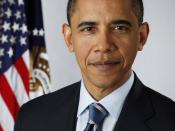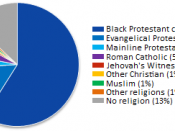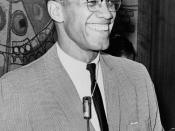When will it end? Racial stereotypes have been around since the 19th century and its presence is the United States is still felt; this ideology has been portrayed in all types of mediums where semiotics influence a person's thought process. The influence of racial stereotyping has molded how a person judges another person by the basis of their race. Walter Mosley, the author of Devil in a Blue Dress, takes advantage of existing racial stereotypes to inform his readers of the enormous issue still facing society today. Mosley has incorporated the issues of ethnic discrimination noticed in media and advertisements in Western Culture while mass advertisements from the media has led the battle for racial stereotyping. A common stereotype portrays all African-Americans to speak "ghetto" also known as Ebonics. The Hip-Hop and media industry are two of the main mediums that has effectively influenced popular culture. M.T.V
(Music Television) liberally broadcasts programs to its viewers African Americans people speaking words such as "y'all and n'ah mean" are just the tip of the iceberg for this dialect of English. The effect of portraying all black people in television talking "ghetto" significantly demeans their image of knowledge and their ability to communicate proficiently with society. If one just watched M.T.V all of their life, he or she they would assume all African-Americans people speak another dialect of English. The effect of the Ebonic stereotype has carried over into English literature.
Walter Mosley incorporates the stereotype of African-Americans speaking Ebonics to give his readers a sense of why black people talk in "ghetto". Easy, one of the main characters in Devil in a Blue Dress, states "I always tried to speak proper English in my life, the kind of English they taught in school, but I found over the...


